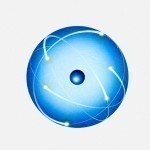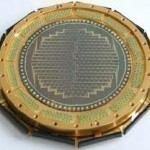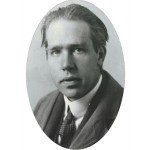Teleportation refers to instantaneous transport of an object or matter from one place to a predetermined location. In this mode of travel, the object or matter being transported is broken down and immediately recreated somewhere else. In quantum teleportation, which is the favored teleportation type in laboratories, the properties of the origin quantum system are recreated in the destination quantum system even if the two quantum systems do not have physical contact. Most people, however, hold to the belief that teleportation will forever remain fiction, with the more knowledgeable pointing Read More
What Are Subatomic Particles?

Subatomic particles are the most elementary particles found in nature. The three basic subatomic particles that comprise an atom are protons, electrons, and neutrons. The historical definition of a subatomic particle was expanded over the past several decades to include elementary particles that are less complex than an atom and cannot be broken down further. The modern definition of subatomic particles breaks all of them down into either leptons or quarks. Subatomic Particles that Make up an Atom Electron The electron was the first subatomic particle discovered in 1896. U.K. Read More
Quantum Entanglement
Quantum entanglement is a property of quantum mechanics in which two or more objects in a system that are linked together can no longer be described singularly. In other words, if the two objects are somehow linked, even when separated by tremendous distances, one cannot be analyzed and described without paying the same attention to the other one. Quantum entanglement, while not known as that name, appeared around 1935 when Einstein, Podolsky and Rosen commented on it in their EPR paradox. The theory suggests that two objects that are not Read More
What is a Bolometer?

Bolometers find and measure very small amounts of electromagnetic radiation. They are also referred to as actinic balances and measure electromagnetic radiation in radio, ultraviolet, and gamma ray forms. Since their first use, bolometers have been modified to detect other particles and to be used in physics experiments. Who Invented the Bolometer? Samuel Pierpont Langley invented the bolometer in the late 1800s. The first bolometer was used with a telescope in order to measure infrared radiation on the Moon and other astronomical objects. It consisted of two chambers with platinum Read More
Bohr Radius

In 1913, Niels Bohr put forth his model of the structure of an atom. In this structure, he argued that electrons orbit the central nucleus, which is made up of protons and neutrons. The model went on to explain that electrons orbit at a specific distance from the nucleus and that the nucleus depends on the electrons’ energy. The Bohr model attempted to explain that electrons follow a specific circular orbit. Electrostatic forces determine this orbit, therefore the electrons’ location can be pinpointed. For example, hydrogen only has a single Read More
Quantum Dots
A quantum dot is a semiconductor that exhibits tremendous capability despite the fact that they are so tiny: 2-10 nanometers. Because materials behave much differently when they are at this size, researchers hope that they will be able to make tremendous steps in many different applications of science and technology. Because of the size of them, the quantum dots provide the researcher with the ability to tune the dots to levels that have never been reached before. To describe it in a much more straight forward manner, a quantum dot Read More
Qubit
A quantum bit, otherwise known as a qubit, is one of the units used when dealing with quantum information. Another way to look at a qubit is that it is a state vector which is an object of math that can describe different quantum systems. In the case of the qubit, that quantum system is a two-level quantum-mechanical system. One of the biggest discussions when dealing with the qubit is its comparison to the traditional or classical bit when dealing with computer information. Bit vs. Qubit A bit is one Read More
Quantum Electrodynamics
Developed in the 1920s by a group of physicists, quantum electrodynamics is the quantum field theory that is employed for electrodynamics. Its general purpose is to describe how matter and light interact with each other. Physicists are able to mathematically describe all different types of phenomena that involve the electrically charged particles that are interacting by exchanging photons. Because quantum electrodynamics has been known to provide tremendously accurate predictions – especially in cases of the anomalous magnetic moment of the electron – that one physicist referred to quantum electrodynamics as Read More
Quantum
A quantum is the most basic physical unit that is involved in any type of interaction. For example, a quanta (plural) is the transfer of different energy particles such as photos and bosons when discussing matter. Because of the Latin of the word quantus meaning "how much," it can be concluded that when discussing quantum, it is because of the idea that there is a quantifying of the energy. In other words, a quantum allows for a physical property to be quantified. Because it can be quantified, it means that Read More
Linear Particle Accelerator

A linear particle accelerator is a large device that can speed up electrons, ions, or other particles and slam them into a target in order to release subatomic particles and radiation. Sensors then record these by-products, send their data to a central computer system that creates a digital, 3D image of the particle, and labels its specific chemical and physical attributes. Linear particle accelerators differ from circular particle accelerators only in that linear ones speed up particles in a straight, narrow path while circular ones use a large, circular path. Read More


Share on: